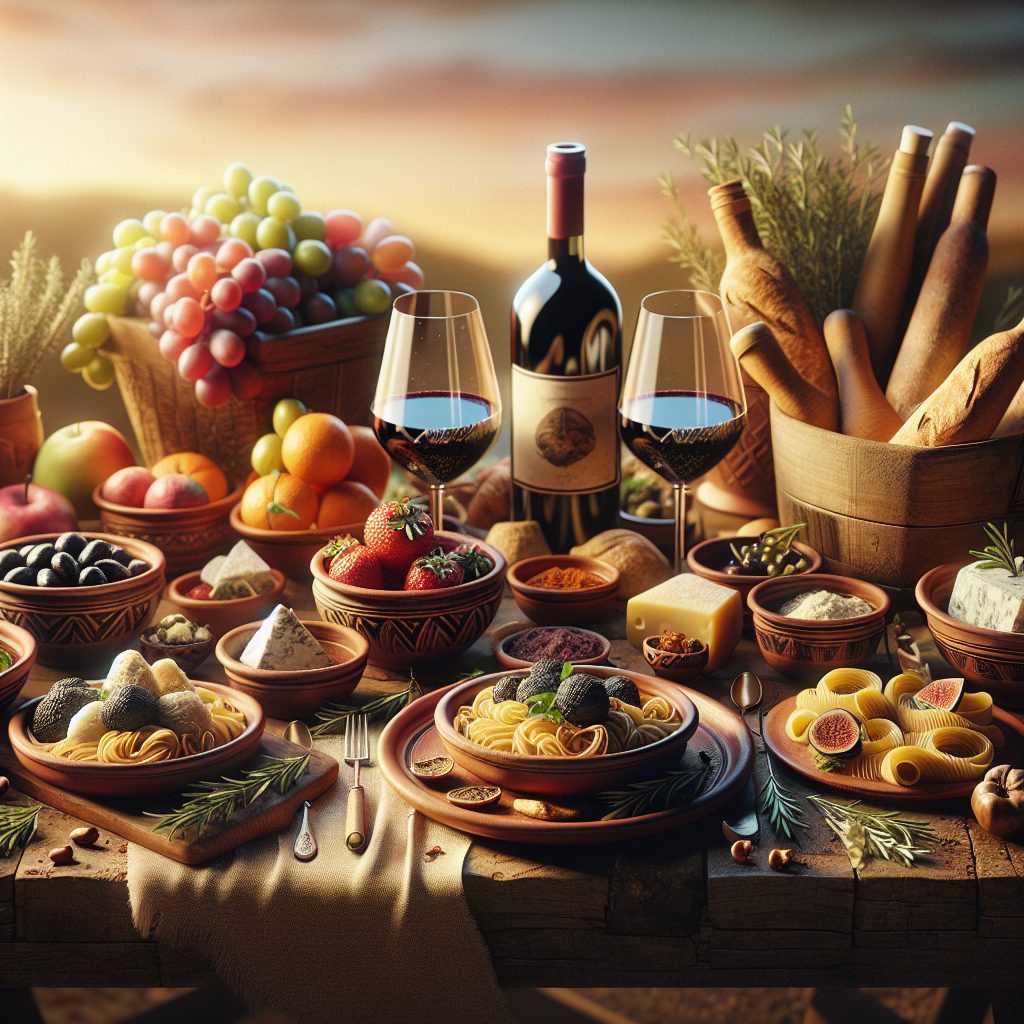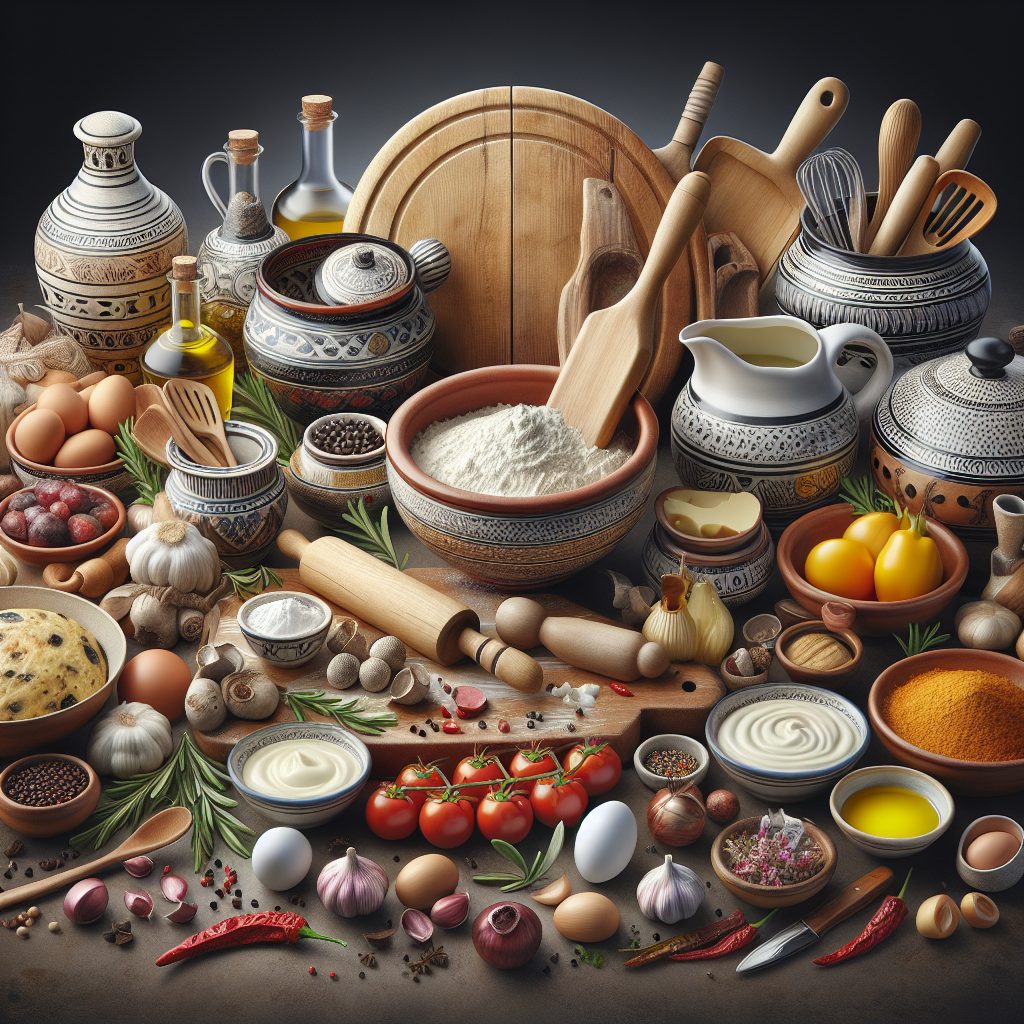Exploring regional Sardinian specialties is like embarking on a gastronomic journey through the heart and soul of this beautiful Mediterranean island. With a rich culinary heritage that draws influence from various cultures, Sardinia boasts a unique combination of flavors, ingredients, and cooking techniques that are sure to tantalize the taste buds of even the most discerning food enthusiasts. One of the defining characteristics of Sardinian cuisine is its emphasis on locally sourced and seasonal ingredients, which not only ensures freshness but also enhances the flavors of the dishes. From the succulent seafood delicacies of the coastal regions to the hearty meat-based dishes of the mountainous interior, Sardinia offers a diverse array of regional specialties that reflect the island’s vibrant history and cultural traditions.
Among the key takeaways of exploring Sardinian specialties are the remarkable impacts of the island’s ancient traditions on its cuisine. The influence of Phoenician, Roman, Arab, and Spanish civilizations can be seen in the unique ingredients and cooking techniques that have been passed down through generations. For instance, the extensive use of aromatic herbs and spices in Sardinian dishes can be traced back to Arab influences, while the abundance of seafood in coastal cuisine showcases the island’s strong historical ties to maritime activities. Moreover, Sardinia’s geographical location and natural resources have contributed to the development of a distinct culinary identity. The fertile soils and mild Mediterranean climate yield an abundance of fresh produce, which forms the foundation of many traditional dishes.
In the upcoming sections, we will delve deeper into the captivating world of Sardinian specialties. We will explore the coastal delicacies that celebrate the island’s deep connection to the sea, such as the renowned Bottarga, a cured tuna or mullet roe, and the refreshing Fregola con Arselle, a seafood and semolina pasta dish. Additionally, we will venture into the heart of Sardinia to discover the rustic mountain specialties that showcase the island’s pastoral traditions, such as the succulent Porceddu, a roasted suckling pig, and the flavorful Pane Carasau, a traditional thin and crispy bread. Stay tuned as we unravel the mouthwatering secrets of Sardinian cuisine and explore the diverse flavors and unique features that make it a true culinary gem.
Key Takeaways
1. Sardinia, an Italian island known for its rich culinary heritage, offers a variety of regional specialties that are worth exploring and are influenced by both land and sea.
2. The island’s diverse geography and climate contribute to the unique flavors found in Sardinian cuisine, with dishes often featuring local produce, seafood, wild game, and aromatic herbs.
3. Some of the must-try Sardinian dishes include “porceddu,” a succulent roasted suckling pig, “culurgiones,” handmade pasta filled with potato and cheese, and “bottarga,” a delicacy made from salted and dried mullet roe.
4. Sardinia’s traditional cheese-making practices have produced distinctive varieties such as “pecorino sardo,” made from sheep’s milk, and “casu marzu,” a rare and infamous cheese containing live maggots.
5. Exploring the gastronomic delights of Sardinia goes beyond just the food; it also involves immersing oneself in the island’s cultural heritage, discovering traditional festivals, trying local wines like “Cannonau,” and experiencing warm Sardinian hospitality.
What are the regional Sardinian specialties worth exploring?
Sardinian Cheeses: A Gastronomic Delight
Sardinia boasts an array of unique cheeses that have been perfected through centuries of traditional craftsmanship. Pecorino Sardo, a firm and full-bodied cheese, and Casu Marzu, an adventurous and infamous cheese containing live maggots, are just a glimpse into the world of Sardinian cheese.
Culurgiones: Savory Pillows from Sardinia
Culurgiones are exquisite handmade pasta reminiscent of small dumplings filled with a delightful combination of potato, pecorino cheese, and mint. These delectable creations are often served with a simple tomato sauce or a drizzle of olive oil and grated cheese.
Sardinian Seafood: Flavors of the Mediterranean
Being an island, Sardinia naturally showcases an abundance of fresh seafood delicacies. From delectable bottarga, which is cured fish roe traditionally grated over pasta or salads, to mouthwatering fregola con arselle, a dish of small pasta pearls cooked with clams, the island offers a true taste of the Mediterranean.
Suckling Pig: A Traditional Feast
One cannot explore Sardinian cuisine without indulging in a succulent suckling pig. This traditional specialty, known as Porchetta, is slow-roasted over a wood fire until the skin is perfectly crispy while the meat remains tender and moist. It is often served as the centerpiece for festive occasions.
Malloreddus: Sardinian Gnocchi
Malloreddus, commonly referred to as Sardinian gnocchi, is a pasta shape resembling small shells made with semolina flour and saffron. Served with a variety of sauces, such as tomato and sausage ragu or a delicate saffron-infused cream sauce, this dish is a true hallmark of Sardinian cuisine.
Numbarieddu: A Traditional Sardinian Soup
Numbarieddu is a hearty and flavorsome traditional Sardinian soup made with lamb, vegetables, and various aromatic herbs. The long cooking process ensures that the meat becomes tender and the flavors meld together, creating a comforting and satisfying dish, especially during the colder months.
Nuraghe Cuisine: Ancient Recipes Preserved
Sardinia is home to the intriguing Nuraghe civilization, and their ancient recipes are still cherished today. Dishes such as malloreddus al ragù di cinghiale (Sardinian gnocchi with wild boar ragu) and fainè (a chickpea pancake) are examples of how Sardinians honor their roots while tickling the taste buds of curious food enthusiasts.
Sardinian Desserts: Sweet Endings
Ending a Sardinian culinary journey with their delightful desserts is a must. Seadas, a deep-fried pastry filled with warm cheese and drizzled with honey, and amaretti, almond cookies with a crisp exterior and chewy center, are just a glimpse into the diverse range of indulgent treats Sardinia has to offer.
Ready to explore the flavors of Sardinia? Here are some tips:
- Research local Sardinian restaurants or food festivals in your area to immerse yourself in authentic Sardinian cuisine.
- Don’t be afraid to try unique Sardinian ingredients like bottarga or Casu Marzu – they provide a truly unique and memorable taste experience.
- Consider visiting Sardinia to fully immerse yourself in the culinary culture and explore the regional specialties firsthand.
- Experiment with Sardinian recipes at home using traditional ingredients and techniques to recreate the flavors of the region.
- Engage with locals or Sardinian food enthusiasts to gain insights into the best places to discover and savor regional Sardinian specialties.
Frequently Asked Questions:
1. What are regional Sardinian specialties?
Regional Sardinian specialties refer to traditional dishes from the Italian island of Sardinia that are unique to the region. These dishes are often made using local ingredients and follow centuries-old recipes.
2. What are some famous Sardinian cheeses?
Sardinia is known for its delicious cheeses, such as pecorino sardo, casu marzu, and fiore sardo. Pecorino sardo is a hard cheese made from sheep’s milk, while casu marzu is a traditional cheese with live maggots. Fiore sardo is a smoked cheese with a distinct flavor.
3. Are there any vegetarian regional Sardinian specialties?
Yes, there are vegetarian options available in regional Sardinian cuisine. Some popular vegetarian dishes include malloreddus (a type of pasta), fregola (a small spherical pasta), and pane carasau (a crispy flatbread).
4. What is the traditional Sardinian pasta dish?
Malloreddus, also known as gnocchetti sardi, is a traditional Sardinian pasta dish. It is typically made with semolina flour and saffron, giving it a unique yellow color. Malloreddus is commonly served with a variety of sauces, including tomato-based sauces or a saffron-infused butter sauce.
5. Can you recommend a traditional Sardinian dessert?
One popular traditional Sardinian dessert is seadas. Seadas are deep-fried pastries filled with a mixture of cheese, typically pecorino sardo, and sometimes flavored with lemon zest or honey. They are served hot and often drizzled with honey for a sweet finish.
6. What is the main protein source in Sardinian cuisine?
The main protein source in Sardinian cuisine is often derived from meat, particularly lamb, pork, and beef. This is because Sardinia has a strong tradition of farming and pastoralism.
7. Are there gluten-free options among regional Sardinian specialties?
Yes, there are gluten-free options available in Sardinian cuisine. Some gluten-free dishes include carasau bread (a traditional crispy flatbread), various seafood dishes, and desserts like amaretti cookies.
8. What is the importance of seafood in Sardinian cuisine?
Seafood plays a significant role in Sardinian cuisine due to the island’s geographical location. Sardinia is surrounded by the Mediterranean Sea, and its coastal regions are known for their abundance of fresh seafood. Traditional Sardinian seafood dishes include bottarga (salted and cured fish roe), fregola with clams, and grilled fish.
9. How can I try regional Sardinian specialties outside of Sardinia?
Many Italian restaurants around the world offer regional Sardinian specialties on their menus. You can also find select Sardinian products, such as cheeses or pastas, in specialty food stores or online. Alternatively, you can try recreating traditional Sardinian recipes at home using readily available ingredients.
10. Are there any specific wine pairings for Sardinian dishes?
Yes, Sardinia is home to several unique and delicious wines that pair well with regional dishes. Some popular Sardinian wines to consider include Vermentino di Gallura, Cannonau (Grenache), and Carignano del Sulcis. These wines complement the flavors of Sardinian cuisine, enhancing the overall dining experience.
Final Thoughts:
Exploring regional Sardinian specialties is a delightful culinary journey that offers a taste of Sardinia’s rich culture and history. The island’s traditional dishes, from the famous pecorino sardo cheese to the unique seadas dessert, showcase the unique flavors and techniques passed down through generations. Whether you choose to experience these delicacies in Sardinia or recreate them at home, regional Sardinian specialties are sure to leave a lasting impression on your taste buds.
The combination of fresh seafood, quality meats, locally sourced ingredients, and traditional recipes make exploring regional Sardinian specialties a truly authentic experience. The diverse flavors, textures, and aromas found in Sardinian cuisine reflect the island’s vibrant culture and culinary heritage. So, embark on this gastronomic adventure and savor the essence of Sardinia through its remarkable regional specialties.






